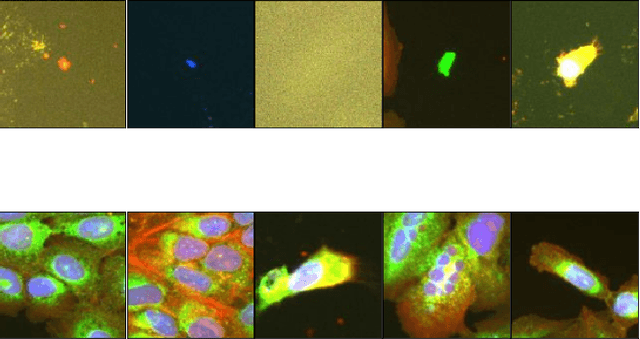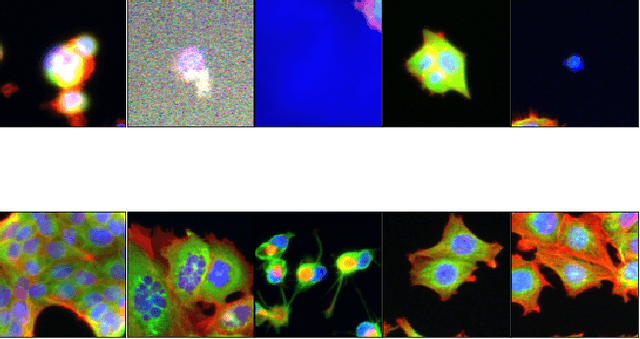Umar Masud
Comparison of semi-supervised learning methods for High Content Screening quality control
Aug 09, 2022



Abstract:Progress in automated microscopy and quantitative image analysis has promoted high-content screening (HCS) as an efficient drug discovery and research tool. While HCS offers to quantify complex cellular phenotypes from images at high throughput, this process can be obstructed by image aberrations such as out-of-focus image blur, fluorophore saturation, debris, a high level of noise, unexpected auto-fluorescence or empty images. While this issue has received moderate attention in the literature, overlooking these artefacts can seriously hamper downstream image processing tasks and hinder detection of subtle phenotypes. It is therefore of primary concern, and a prerequisite, to use quality control in HCS. In this work, we evaluate deep learning options that do not require extensive image annotations to provide a straightforward and easy to use semi-supervised learning solution to this issue. Concretely, we compared the efficacy of recent self-supervised and transfer learning approaches to provide a base encoder to a high throughput artefact image detector. The results of this study suggest that transfer learning methods should be preferred for this task as they not only performed best here but present the advantage of not requiring sensitive hyperparameter settings nor extensive additional training.
Analysing Statistical methods for Automatic Detection of Image Forgery
Nov 24, 2021



Abstract:Image manipulation and forgery detection have been a topic of research for more than a decade now. New-age tools and large-scale social platforms have given space for manipulated media to thrive. These media can be potentially dangerous and thus innumerable methods have been designed and tested to prove their robustness in detecting forgery. However, the results reported by state-of-the-art systems indicate that supervised approaches achieve almost perfect performance but only with particular datasets. In this work, we analyze the issue of out-of-distribution generalisability of the current state-of-the-art image forgery detection techniques through several experiments. Our study focuses on models that utilise handcrafted features for image forgery detection. We show that the developed methods fail to perform well on cross-dataset evaluations and in-the-wild manipulated media. As a consequence, a question is raised about the current evaluation and overestimated performance of the systems under consideration. Note: This work was done during a summer research internship at ITMR Lab, IIIT-Allahabad under the supervision of Prof. Anupam Agarwal.
 Add to Chrome
Add to Chrome Add to Firefox
Add to Firefox Add to Edge
Add to Edge